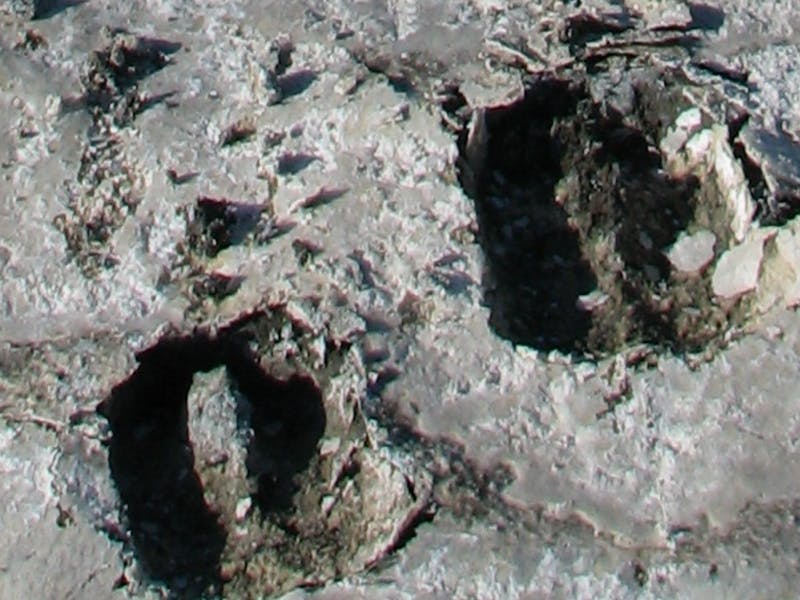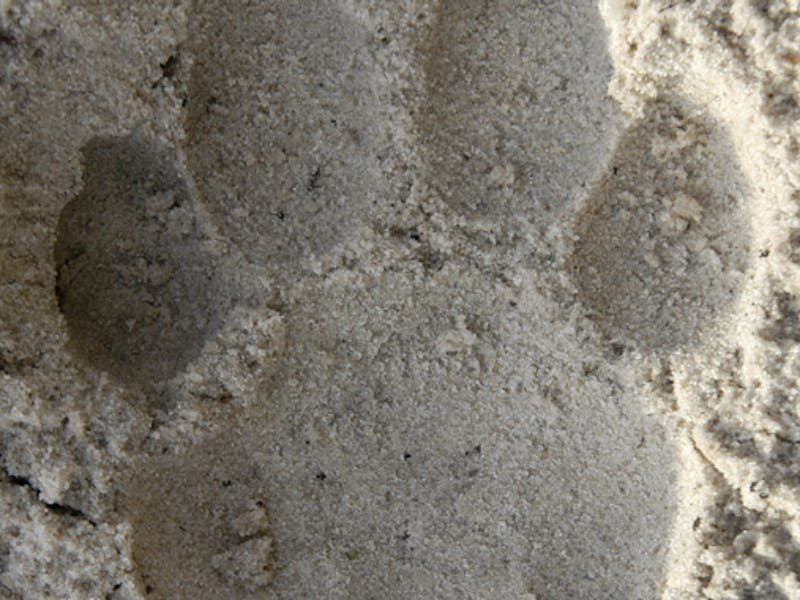
Guess who's walking: animal tracks (Infographic) (Quiz)
Just because we can’t see an animal in an area, doesn’t necessarily mean they haven’t previously been there.
Animals leave many clues and signs behind them as they pass through the bush, allowing expert trackers to fall into a detective role of establishing factors that go way beyond just the identification of the species.
Here we delve into the fascinating importance of animal tracks (also known as ‘spoors’) and our top tips when identifying them! Then, put your knowledge to the test and try to identify the tracks in our quiz below.
A spoor is defined by the marks or tracks left behind as an animal travels.
What can animal tracks tell us?
Tracks can tell a story allowing conservationists to decipher all kinds of information, sometimes more reliably than if the animal was physically present! Listed are some examples of the information we can collect from spoors:
- The species
- The sex and age of the animal
- The time of passage
- The direction of travel
- Behavioural clues (i.e. a hunting predator)
But why do we want to know this?
Conservationists and researchers collect this information for many different reasons. Spoors can help to determine population trends within a specific area. It helps answer questions like 'are more species heading to watering holes during a drought?'
Tracks also help to gather information on elusive species like wild dogs, leopards, and other nocturnal animals. These creatures can be challenging to spot in person, and so their spoors allow a larger dataset to be collected.
Furthermore, fresh tracks give the opportunity to actually physically find the animal. You may think that finding an animal as large as an elephant is straightforward, however, the African bush is a vast place, and sometimes even the biggest animals are swallowed up, meaning you can drive past them without a second thought.

The dual nature of tracks: benefits and dangers
While animal spoors offer valuable benefits for conservation research, these inconspicuous splashes of evidence can, unfortunately, cause more harm.
As humans, we find evidence to help solve crimes, but, in the animal world, spoors can unintentionally contribute to them. Poaching is a massive problem in terms of wildlife conservation in southern Africa, which is depleting populations such as rhinos.
Poachers have excellent tracking skills, allowing them to meticulously track animals for days at a time. Unfortunately, animals are unable to avoid or cover their tracks as they move through the bush, meaning that the responsibility falls on conservationists and anti-poaching units to protect them.

Common spoor examples
Identifying tracks at a broad level, like 'order' or 'family,' is manageable – we all recognise the general shape of a cat or dog print. However, pinpointing the exact species becomes challenging.
Cats and dogs
All cat prints have three lobes on the back edge of their paw, and there are different clues to help narrow this down further.
For example, lions have the largest spoors of cats approximately 9-12cm long whereas cheetahs are the only feline that do not have retractable claws, so if there are claw marks this could be an obvious indication.
Comparing cats with dogs (and others such as hyenas) is straightforward when you focus on their main pad. Dogs and hyenas lack the three lobes and instead have a more triangular-shaped pad, as well as the presence of claws.
Ungulates
Other game can be referred to as ungulates (hoofed animals) and have even or odd numbers of toes.
Zebras are odd-toed and have a track much resembling a horse with a prominent triangle seen at the back.
Rhinos have large spoors with three toes. The middle toe is much larger than the other outer ones, and they also have two lobes at the back.
Giraffes are even-toed ungulates and can be identified by their large tracks (18-22cm). They have cloven hooves in the shape of two elongated ovals very close together.
Hippos have four toes and are easily identified by the rounded toes that they imprint.
Others
Elephants are an exception, and their tracks are very easy to identify. They form an almost perfect circle and on soft ground, ridges and cracks can be seen.

Top five tips to become an expert tracker
Identifying tracks can be tricky, especially when factors like the substrate come into play! Here are a few top tips to enhance your tracking skills:
- Research the species in the area
- Avoid walking on tracks to preserve them
- Look for additional signs like scat or tree markings
- Track into the sun for better visibility
- Carry a measuring tool for size reference

Animal track quiz answers
- Elephant
- Lion
- Zebra
- White rhino
- Cheetah
- Hippo
- Giraffe
- Leopard











